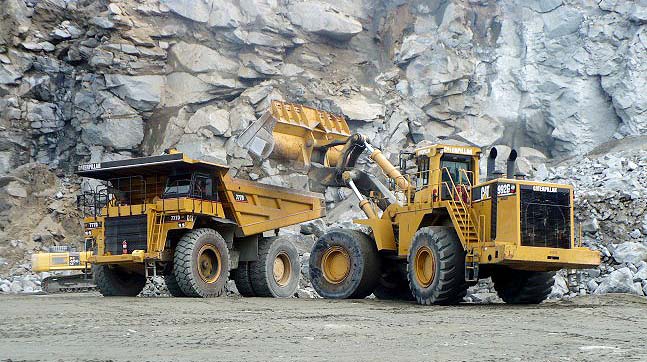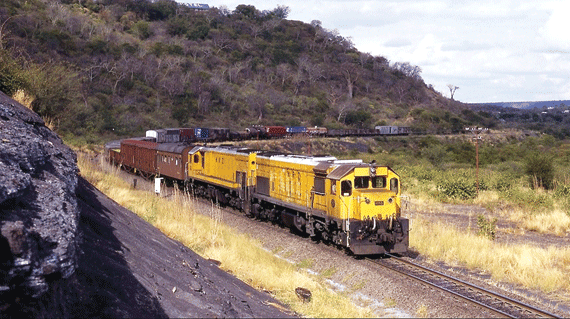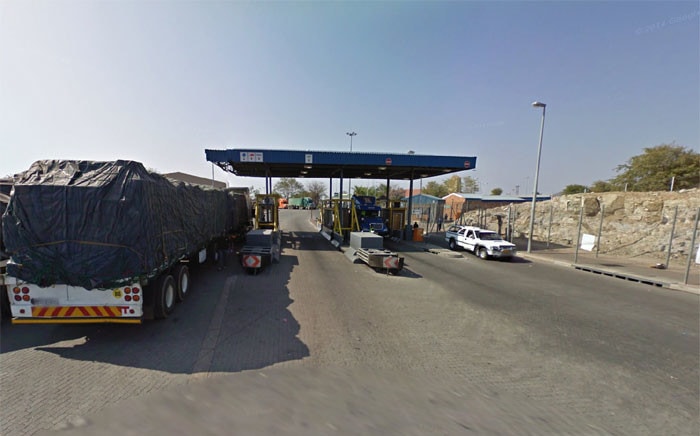Transport and Logistics challenges faced by Zimbabwe Mining Industry
Zimbabwe has a long and diverse history of mining, with more than sixty types of different minerals of which about 40 minerals; primarily gold, nickel and copper, but also coal, diamonds, platinum and chromite already being mined.
With the increasing demand for primary mineral commodities in the open-integrated world economy, mineral export revenues have remained a larger share of GDP.
The country boasts the second-largest platinum deposit and high-grade chromium ores in the world, with approximately 2.8 billion tons of PGM and 10 billion tons of chromium ore. Yet the country still remains amongst the poorest nations in the world, and exporting minerals from Zimbabwe is a dauting task.
Low foreign currency retention requirements, inadequate regulatory framework, political instability, and lack of infrastructure have challenged mineral exporters, particularly at times when the black-market exchange rate diverged greatly from the official rate leading to smuggling.
The government’s expectations the sector would drive economic growth were dampened by COVID-19 in 2020, but there have been some good signs of recovery since 2021 driven by improved international commodity prices.
Quick Facts
- Area: 390,759 sq. km (150,873 sq. miles)
- Mineral Resources: Gold, Platinum, Diamonds, Nickel, Chrome, Coal, Iron Ore Copper, etc
- Exports to: China, South Africa, Japen, United Arab Emirates (UAE), United Kingdom (UK),Mozambique, Zambia, Germany, and more.
- Estimated Resources: 2.8 billion tons of PGM and 10 billion tons of chromium ore.
- Contribution to GDP: $12 billion (WB
Source: trade.gov
What are the challenges.
The Zimbabwean Government recognises that the mining industry is crucial to the growth and re-construction of the Zimbabwean economy. Despite many challenges, the mining sector is expected to be the primary driver of growth in the near term and will attract the most foreign direct investment into the country.
What are these challenges?
- Limited access to foreign currency: Zimbabwe has experienced a shortage of foreign currency, which makes it difficult for mineral exporters to pay for imports, such as machinery and spare parts, which are necessary for their operations. This has led to production challenges, delayed payments to suppliers, and difficulties in meeting export orders.
- Infrastructure deficiencies: Zimbabwe's infrastructure is outdated and inadequate, particularly in the transport sector. Poor roads, limited rail capacity, and insufficient air transport infrastructure make it difficult for mineral exporters to transport their goods to export markets, resulting in higher transportation costs and delays.
- Inadequate regulatory framework: Zimbabwe's regulatory framework is considered to be opaque, unpredictable, and inconsistent, leading to delays in obtaining permits, licenses, and approvals. The lack of transparency and clarity also makes it difficult for mineral exporters to plan their operations and comply with regulations.
- Political instability: Zimbabwe has a history of political instability and social unrest, which can lead to disruptions in the supply chain and create uncertainty for investors. This has resulted in decreased foreign direct investment and a lack of confidence in the economy, which makes it difficult for mineral exporters to expand their operations.
- Inadequate funding: Mineral exporters require significant capital investments to purchase equipment, develop new mines, and expand their operations. However, access to finance can be limited, particularly for small and medium-sized enterprises, which make up a significant portion of the mining sector. This can limit their ability to invest in new technologies and equipment, which are necessary to remain competitive.
Overcoming the challenges
The government of Zimbabwe has implemented various policies and initiatives aimed at boosting the mining sector:
- Zimbabwe Mining Development Corporation (ZMDC): The ZMDC is a state-owned entity established to help in the development of the mining sector and to facilitate investment. The ZMDC has been involved in several joint ventures with private companies to explore and extract minerals, with the goal of increasing mineral exports.
- Mineral Exploration Fund: The government has established a Mineral Exploration Fund to provide financial support to companies involved in mineral exploration. This fund is aimed at encouraging investment in mineral exploration and increasing the discovery of new mineral deposits, which will help to boost mineral exports.
- Mineral Export Facilitation: The government has been working to simplify and streamline the procedures for obtaining licenses and permits, reducing bureaucracy, and improving the ease of doing business in the country, with the goal of making it easier for companies to export minerals.
- Tax Incentives: The government has implemented various tax incentives for companies involved in mineral exploration and production, including tax holidays, duty exemptions, and other financial support, in order to encourage investment and boost mineral exports.
- Infrastructure Development: The government has been investing in the development of infrastructure in the mining sector, including the improvement of roads, power supply, and water supply, to make it easier for mineral exporters to transport their products to markets.
- Foreign Direct Investment: The government has been promoting foreign direct investment in the mining sector, by actively marketing the country's mineral resources and attracting investment from foreign companies.

The Reality: Supply chain challenges
While these initiatives are a step in the right direction, Zimbabwe being a land locked nation with no seaports to export these minerals, moving these minerals in bulk is a major logistical challenge, not to mention:
- Documentary approvals from MMCZ
- Unreliable availability of rail wagons
- Long routes to port
- Availability of tipper trucks and cost of shipping and road transport
- Shipping / carrier capacity at Mozambique and South African ports
- Delays at borders
- Theft of products at rail sidings etc.
Add to this labour shortages, port congestion, the global container shortage, extraordinary shipping costs, the ongoing war in Ukraine, widespread inflation, raw materials shortages, energy shortages and the increased demand for natural resources have escalated trade costs and Africa has not been spared in rising freight costs.
The Southern Africa Freight News recent publication laments the delays of movement of cargo across borders, where the turnaround time of containers has doubled, negatively affecting the transport costs and the volumes moved.

Mineral Export Permit
The export license for mineral exports in Zimbabwe is called a Mineral Export Permit, and it is issued by the Zimbabwe Minerals Marketing Corporation of Zimbabwe (MMCZ). This permit authorizes a company to export minerals from Zimbabwe and certifies that the minerals have been properly mined, processed, and packaged according to the requirements of the destination country.
The Mineral Export Permit is a crucial document that must be obtained before a company can export minerals from Zimbabwe, and it helps to ensure that the minerals meet international quality standards and that the export is conducted in compliance with all relevant laws, regulations, and best practices.
Exporting minerals from Zimbabwe typically involves the following steps:
- Obtain necessary permits and licenses: Before exporting minerals from Zimbabwe, a company must obtain the necessary permits and licenses from the relevant government agencies, such as the Ministry of Mines and Mining Development, the Environmental Management Agency, and the Zimbabwe Revenue Authority.
- Obtain quality certification: To ensure that the minerals meet international quality standards, the company must obtain certification from the relevant authorities, such as the Zimbabwe Minerals Marketing Corporation of Zimbabwe (MMCZ) or independent labs.
- Package and transport the minerals: The minerals must be packaged according to the requirements of the destination country and transported to the port of shipment.
- Complete customs formalities: At the port of shipment, the company must complete customs formalities, including the payment of any applicable taxes or duties, and obtain the necessary documents, such as a bill of lading or an export license, to enable the shipment of the minerals.
- Customs Clearance: A company must obtain customs clearance from the Zimbabwe Revenue Authority, which certifies that the minerals have been properly declared and that all applicable taxes and duties have been paid.
These are the general steps involved in exporting minerals from Zimbabwe, but the specific requirements may vary depending on the type of minerals, the destination country, and other factors.
It is important for companies to comply with all relevant laws, regulations, and best practices, to ensure a smooth and successful export process.
Understanding the mining industries logistics central challenges
In a global economy, transporting minerals and customs clearance is a complex and ever-changing landscape of rules and regulations. Efficient customs brokerage and full compliance with freight safety and security requirements are the keys to fluid supply chain management.
Mineral export logistics refer to the processes and activities involved in transporting minerals from the mine site to the port of export and then to the destination country.
This involves a range of tasks, including:
- Loading: Loading the minerals onto trucks, trains, or other vehicles for transport to the port of export.
- Transportation: Transporting the minerals to the port of export, which may involve overland trucking or rail transport, or a combination of both.
- Port Operations: Operating the port of export, including loading the minerals onto ships and ensuring that all required customs and regulatory procedures are completed.
- Shipping: Shipping the minerals to the destination country, which may involve ocean transportation or air freight, depending on the type of minerals and the destination.
- Customs Clearance: Clearing the minerals through customs at the port of entry in the destination country, which requires the submission of the necessary customs documentation and payment of any applicable taxes and duties.
- Delivery: Delivering the minerals to the final destination, which may involve trucking or rail transport, depending on the location and accessibility of the destination.

Summary
Zimbabwe presently has a booming minerals export business. This is mainly driven by export growth to China in new minerals such as Lithium but also includes ore traditions exports such as Platinum, Nickel and Iron. The biggest challenge to growth in this market is logistics and supply chain demands and capacity.
At FAMS International we export by tipper truck to Mozambique (Beira) and Johannesburg, although rail wagons can carry around 20 tonnes rail services have historically been very unreliable.
Through careful planning, ensuring all documents are fully verified (before the tipper trucks are loaded), making sure all documentation, export permits and licences on hand before reaching the border (which is critical to ensure quick clearance and no delays) we generally, we have not had issues. Problems can occur if the weight of product carried does not match that on the documentation, but this is rare. We also ensure availability of trucks, containers and ocean carrier capacity which is essential for a successful export operation.
Our on the ground logistics and customs expertise contributes significantly to the seamless flow of goods, in particular our :
- Well planned operational process
- Regular daily reporting
- Collateral management
- Close ties with transporters, carriers and rail companies.
- End-to-end solutions including road/rail/ship and clearance all under one roof with FAMS/DSV network
- Constant monitoring of the Zimbabwean customs regulations in order to update its systems accordingly.
At FAMS International we offer a wide range of services whatever the scale of the project.


